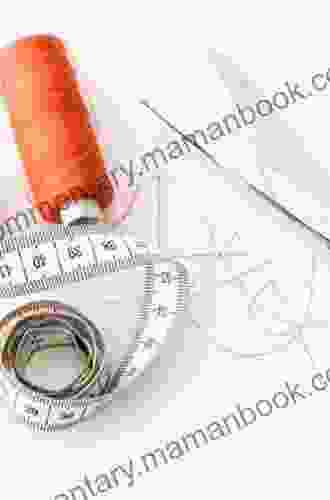Costing for the Fashion Industry: A Comprehensive Guide to Pricing and Profitability

In the dynamic and competitive fashion industry, accurate costing is essential for brands to achieve profitability and maintain a sustainable business. Costing involves determining the total cost of producing a garment, including all direct and indirect expenses. This comprehensive guide will provide an in-depth understanding of costing for the fashion industry, covering various methods, key considerations, and their impact on pricing and profitability.
Types of Costing Methods
There are three main types of costing methods commonly used in the fashion industry:
5 out of 5
| Language | : | English |
| File size | : | 13058 KB |
| Text-to-Speech | : | Enabled |
| Screen Reader | : | Supported |
| Enhanced typesetting | : | Enabled |
| Word Wise | : | Enabled |
| Print length | : | 297 pages |
1. Activity-Based Costing (ABC)
ABC assigns costs to products based on the activities required to produce them. It recognizes that different products may require different levels of resources and activities, and allocates costs accordingly. This method provides a more accurate representation of the true cost of each product.
2. Absorption Costing
Absorption costing includes all manufacturing costs, both fixed and variable, in the cost of the product. Fixed costs, such as rent and utilities, are allocated to products based on their production volume. This method is commonly used for financial reporting purposes.
3. Marginal Costing
Marginal costing includes only variable costs, which change with production volume, in the product's cost. Fixed costs are considered period costs and are not included in product costing. This method is useful for decision-making and profit planning.
Key Considerations in Costing
Accurate costing requires consideration of several key factors:
1. Material Costs
Material costs include the cost of fabrics, trims, and other raw materials used in garment production. These costs vary depending on the quality, type, and quantity of materials used.
2. Labor Costs
Labor costs include the wages and benefits paid to workers involved in the production process. These costs are influenced by the complexity of the garment, production time, and labor rates.
3. Overhead Costs
Overhead costs encompass all indirect expenses related to production, such as rent, utilities, equipment maintenance, and administrative salaries. These costs are allocated to products based on their production volume or other allocation methods.
4. Supply Chain Costs
Supply chain costs include expenses incurred during the sourcing and procurement of materials, as well as the transportation and logistics costs associated with getting materials to the production site.
5. Product Development Costs
Product development costs include the expenses associated with designing, prototyping, and sampling garments. These costs are amortized over the production run.
6. Marketing and Sales Costs
Marketing and sales costs include expenses related to promoting and selling garments, such as advertising, marketing materials, and sales commissions.
Costing for Pricing and Profitability
Accurate costing is crucial for determining the appropriate pricing for garments and ensuring profitability. The following factors should be considered:
1. Markup
Markup is the percentage added to the cost of a garment to determine its retail price. It covers profit margin, overhead costs, and other expenses.
2. Profit Margin
Profit margin is the percentage of profit made on each garment sold. It is calculated by subtracting the cost of goods sold from the selling price and dividing the result by the selling price.
3. Break-Even Analysis
Break-even analysis determines the number of garments that need to be sold to cover all costs and achieve zero profit. It helps in setting realistic sales targets and understanding the financial viability of a product line.
Impact of Costing on Fashion Sustainability
In addition to its financial implications, costing can also impact fashion sustainability. By carefully considering the costs associated with materials, production processes, and supply chains, brands can identify opportunities to reduce environmental and social impacts.
1. Material Sustainability
Choosing sustainable materials, such as organic cotton or recycled fabrics, may increase material costs but can enhance brand reputation and appeal to eco-conscious consumers.
2. Ethical Production
Ensuring ethical production practices, including fair wages and safe working conditions, can increase labor costs. However, it is essential for building a responsible and sustainable fashion business.
3. Supply Chain Transparency
Tracking and monitoring the supply chain can help identify areas where costs can be optimized while ensuring ethical practices and minimizing environmental impacts.
Costing is a complex but essential aspect of the fashion industry. By understanding different costing methods, key considerations, and their impact on pricing and profitability, brands can make informed decisions that ensure their financial success and sustainability. Accurate costing enables fashion businesses to develop competitive pricing strategies, maximize profits, and align their operations with ethical and sustainable practices.
5 out of 5
| Language | : | English |
| File size | : | 13058 KB |
| Text-to-Speech | : | Enabled |
| Screen Reader | : | Supported |
| Enhanced typesetting | : | Enabled |
| Word Wise | : | Enabled |
| Print length | : | 297 pages |
Do you want to contribute by writing guest posts on this blog?
Please contact us and send us a resume of previous articles that you have written.
 Top Book
Top Book Novel
Novel Fiction
Fiction Nonfiction
Nonfiction Literature
Literature Paperback
Paperback Hardcover
Hardcover E-book
E-book Audiobook
Audiobook Bestseller
Bestseller Classic
Classic Mystery
Mystery Thriller
Thriller Romance
Romance Fantasy
Fantasy Science Fiction
Science Fiction Biography
Biography Memoir
Memoir Autobiography
Autobiography Poetry
Poetry Drama
Drama Historical Fiction
Historical Fiction Self-help
Self-help Young Adult
Young Adult Childrens Books
Childrens Books Graphic Novel
Graphic Novel Anthology
Anthology Series
Series Encyclopedia
Encyclopedia Reference
Reference Guidebook
Guidebook Textbook
Textbook Workbook
Workbook Journal
Journal Diary
Diary Manuscript
Manuscript Folio
Folio Pulp Fiction
Pulp Fiction Short Stories
Short Stories Fairy Tales
Fairy Tales Fables
Fables Mythology
Mythology Philosophy
Philosophy Religion
Religion Spirituality
Spirituality Essays
Essays Critique
Critique Commentary
Commentary Glossary
Glossary Bibliography
Bibliography Index
Index Table of Contents
Table of Contents Preface
Preface Introduction
Introduction Foreword
Foreword Afterword
Afterword Appendices
Appendices Annotations
Annotations Footnotes
Footnotes Epilogue
Epilogue Prologue
Prologue Heidi Murkoff
Heidi Murkoff Delia Tannino
Delia Tannino Sonya Writes
Sonya Writes Ken Eidson
Ken Eidson Milen Slavov
Milen Slavov Jolin White
Jolin White Naomi Kritzer
Naomi Kritzer Lawrence F Lowery
Lawrence F Lowery Eswar S Prasad
Eswar S Prasad Karis Baker
Karis Baker Nathan Nicolau
Nathan Nicolau Leena Prasad
Leena Prasad Peter F Hamilton
Peter F Hamilton Marla Benavides
Marla Benavides Hayley Shaver
Hayley Shaver Janey Lee Grace
Janey Lee Grace Kishan Barai
Kishan Barai Annette Lacroix
Annette Lacroix Essa Hansen
Essa Hansen Richard Kostelanetz
Richard Kostelanetz
Light bulbAdvertise smarter! Our strategic ad space ensures maximum exposure. Reserve your spot today!

 Israel BellThe Ultimate Guide to Achieving Sustainable Weight Loss: Unlocking the Key to...
Israel BellThe Ultimate Guide to Achieving Sustainable Weight Loss: Unlocking the Key to...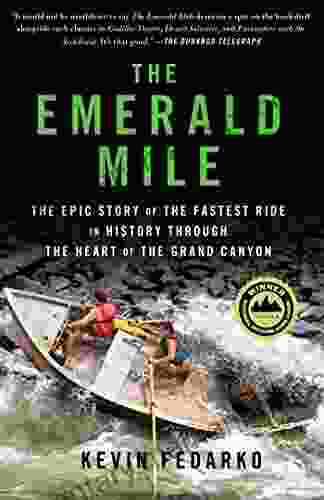
 Nathaniel PowellThe Epic Story of the Fastest Ride in History Through the Heart of the Grand...
Nathaniel PowellThe Epic Story of the Fastest Ride in History Through the Heart of the Grand... Deion SimmonsFollow ·7.7k
Deion SimmonsFollow ·7.7k Desmond FosterFollow ·15.1k
Desmond FosterFollow ·15.1k Floyd PowellFollow ·16.4k
Floyd PowellFollow ·16.4k Dale MitchellFollow ·9.1k
Dale MitchellFollow ·9.1k Don ColemanFollow ·17.5k
Don ColemanFollow ·17.5k Larry ReedFollow ·18.8k
Larry ReedFollow ·18.8k Roberto BolañoFollow ·6.9k
Roberto BolañoFollow ·6.9k Truman CapoteFollow ·16.9k
Truman CapoteFollow ·16.9k

 Kelly Blair
Kelly BlairSheppard Lee Written By Himself: A Journey of...
In the realm of...

 George Bernard Shaw
George Bernard ShawViper Naga Brides: Unveiling the Enthralling Fantasy...
In the realm of...
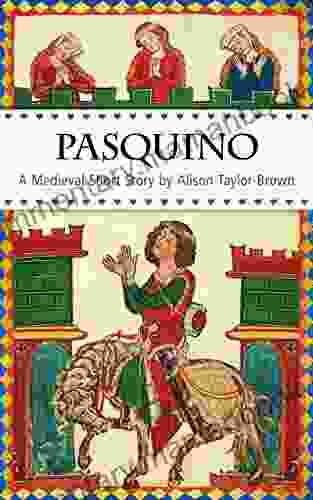
 Neil Gaiman
Neil GaimanOnce Upon a Hill in Tuscany: A Medieval Short Story
In the heart of medieval...
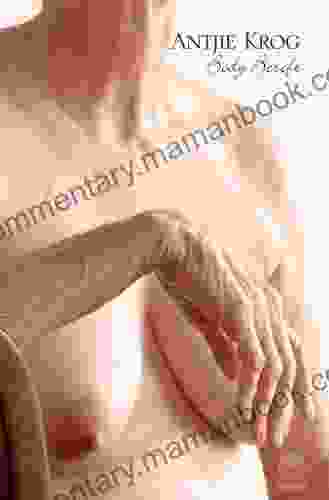
 Preston Simmons
Preston SimmonsBody Bereft: Exploring Loss, Love, and Legacy in Antjie...
A Poetic Requiem for the Lost:...
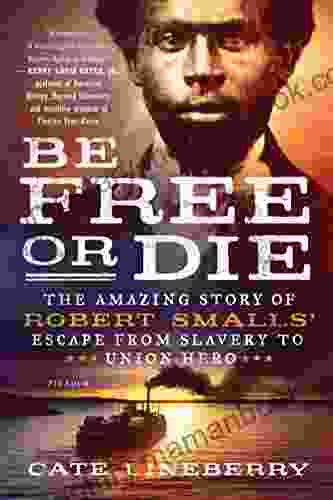
 Percy Bysshe Shelley
Percy Bysshe ShelleyThe Amazing Story Of Robert Smalls Escape From Slavery To...
The life of Robert Smalls is a testament to...
5 out of 5
| Language | : | English |
| File size | : | 13058 KB |
| Text-to-Speech | : | Enabled |
| Screen Reader | : | Supported |
| Enhanced typesetting | : | Enabled |
| Word Wise | : | Enabled |
| Print length | : | 297 pages |


